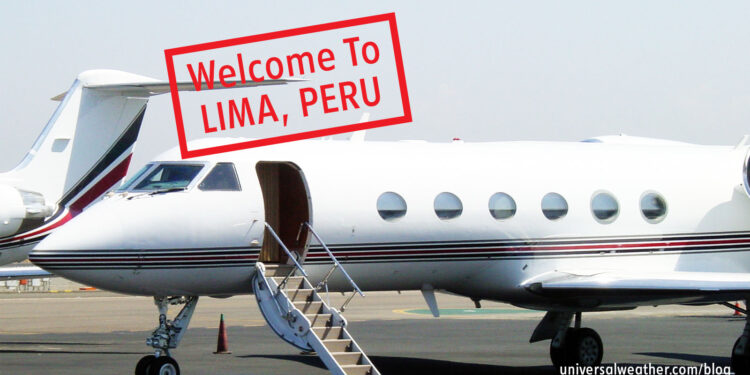BizAv Ops: October 2015 World Bank Meeting in Lima – Part 2: Permits, CIQ, and Documentation

This business aviation blog post continues from our article last week, entitled “BizAv Ops: October 2015 World Bank Meeting in Lima – Part 1: Airports, Alternates, and Local Area.”
While aircraft parking is not anticipated to be an issue at Lima (SPIM) during the World Bank Meeting (October 9-11, 2015), there are reasons why operators may decide to drop, go, and reposition. As some of the recommended alternate options in this article are outside the country, it’s important to work with your 3rd-party provider and ground handler on permit and airport logistics considerations.
The following is an overview of what you need to know:
1. Event specifics
The October 9-11 World Bank Meetings in Lima take place at the National Cultural Center downtown. This venue includes the National Library, National Museum, National Theater, new headquarters of the state-run National Bank, and the under-construction Lima Convention Center. Drive time from SPIM to the city center and World Bank meeting venues is about one hour.
2. Permit considerations
Landing permits are needed for all operations to Peru, and permit lead times normally range 24-48 hours for a single entry/exit. However, if you’re making more than one stop in Peru (i.e. flying a domestic-only leg), the lead time is typically longer – at three-to-four business days. Permits are processed by the Civil Aviation Authority (CAA) during normal office hours: Monday-Friday, 0900-1200 and 1400-1700 local. In short-notice or emergency situations, it may be possible to process landing authority directly with air traffic control. Be aware that landing permit requests are only considered once arrival and departure details are provided and all required documentation is submitted.
3. Landing permit requests
For Peruvian landing permits, it’s necessary to submit full crew and passenger information along with pilot licenses (both sides) and medicals. Complete aircraft documentation – including airworthiness and registration certificates and worldwide insurance – must also be submitted, and originals of all documentation should be carried onboard. Currently, Peru does not have any Stage 2 noise restrictions in place. CAA will acknowledge your permit request and begin processing the permit once all required information/documentation is received. If information is missing or incorrect, CAA will let you know what the issues are so that it can be corrected. Permit confirmation numbers are provided and must be noted in Section 18 of your International Civil Aviation Organization flight plan.
4. Permit validity and revisions
Landing permits for Peru are normally applied for via 3rd-party providers or ground handlers, and they’re valid for +/- 72 hours. Changing schedule within the permit validity window or altering passenger/crew names requires just a notification. If you’re changing airports in Peru, altering the airports you’re arriving/departing from/to, or changing schedule outside the +/- 72-hour window, permit revisions are necessary.
5. CIQ clearance
Although SPIM has a general aviation terminal, Customs, Immigration, and Quarantine (CIQ) processing is always done within the main terminal. General aviation (GA) arrivals normally clear in the same lines as commercial airline passengers. Clearance process takes about 10-25 minutes once you’re at the terminal but can take upwards of an hour during peak times of commercial activity.
6. Visas and documentation
It’s important to confirm visa requirements, based on crew and passenger nationalities, in advance as Peruvian visas are not issued on arrival. For example passenger visas are needed for nationals of Mexico and for U.S. citizens if they’re traveling to Peru for business purposes. Depending on the nationality of the crew, visas may not be required if they are listed on the gen dec for short stays, but operators should confirm requirements in advance with their 3rd-party provider. When you travel to South America, passports are generally required to have at least six months’ remaining validity. Peru is somewhat more flexible on this requirement, and remaining validity of less than six months will not likely be a show stopper. For additional information on visa requirements for Peru, see the IMF visa table, and, for a list of the 97 visa-exempt countries, see the additional IMF visa table.
7. Security considerations
Airport security at SPIM is very good with adequate perimeter fencing, 24-hour security patrols, and CCTV surveillance coverage of ramp areas. Aircraft guards are not allowed airside at SPIM and should not be necessary as the area is very secure and many head-of-state attendees will be traveling with their own military teams. Off-airport security is not a significant risk. Peru is listed as a Threat Level 3 (out of 5) country (the same as the U.S.), but it’s good practice to always be aware of your surroundings and alert to potential of petty crime.
Conclusion
While permits for Peru are relatively straight-forward, it’s recommended that you communicate with your 3rd-party provider to ensure all proper documentation is provided to avoid unnecessary delays. If you’re planning to fly domestic legs within Peru, be prepared for a longer permit lead time. As any needed visas must be obtained prior to arrival, it’s important to confirm applicable requirements well in advance of day of operation.
Questions?
If you have any questions about this article or would like assistance planning your next trip to Peru, contact me at earnestrocha@univ-wea.com.




